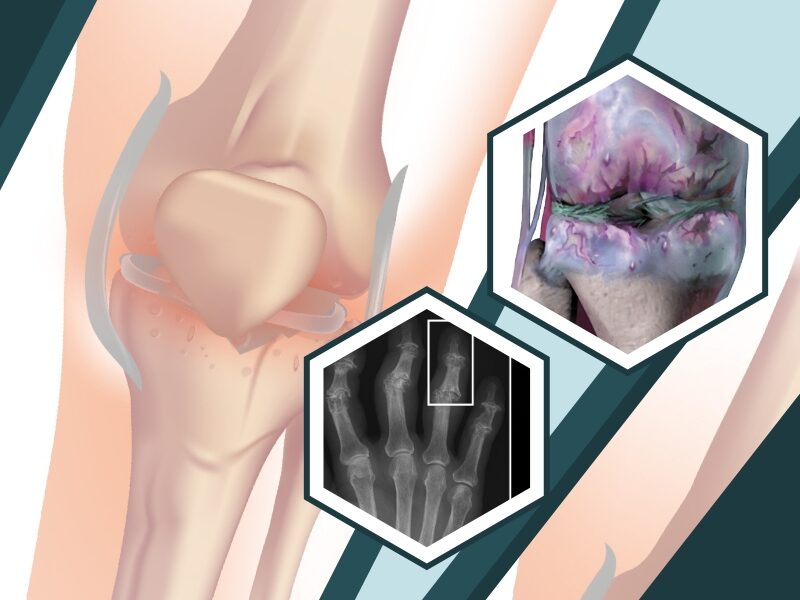Osteoarthritis: Symptoms, Causes, and Treatment

What is Osteoarthritis?
Osteoarthritis is the most common form of arthritis which affects millions of people worldwide. It occurs when the protective cartilage that wears down. Although it can damage any joint, the disorder most commonly affects joints in your hips, hands, and spine. Staying active, maintaining a healthy weight and regular treatments helps slow down the progression of the disease and help improve pain and joint function.
Signs and Symptoms of Osteoarthritis
- Pain. Affected joints might hurt during or after movement.
- Swelling. An inflammatory condition around the joint could be responsible for this.
- Tenderness. Your joint might feel tender when you apply light pressure to or near it.
- Loss of flexibility. You might not be able to move your joint through its full range of motion.
- Stiffness. After waking up or being inactive, joint stiffness may be most evident.
- Bone spurs. These extra bits of bone, which feel like hard lumps, can form around the affected joint.
- Grating sensation. Use of the joint may cause a grating sensation and a popping or crackling sound.
- Limited range of motion that may go away after movement.
- Swelling and muscle weakness around the joint.
- Joint instability or buckling

What Causes Osteoarthritis?
Osteoarthritis is caused by damage or breakdown of joint cartilage between bones. Eventually, if the cartilage wears down completely, the bone will rub on the bone. Besides the breakdown of cartilage, OA affects the entire joint. It causes changes in the bone and deterioration of the connective tissues that hold the joint together and attach muscle to bone. Several risk factors may cause the disease such as:
- Joint injury or overuse. Knee bending and repetitive stress on a joint, can damage a joint and increase the risk of OA in that joint.
- Age and gender. The risk of developing this condition increases as you age. Women are more likely to develop this condition than men, especially after age 50.
- Obesity. Extra weight puts more stress on joints, mostly weight-bearing joints like the hips and knees. This stress increases the risk of affecting the joint. Weight gain also causes metabolic effects that increase your risk.
- Genetics. People who have family members with this condition are more likely to develop especially on the knee.
How to Diagnose Osteoarthritis?
During the physical exam, your doctor will check your affected joint for tenderness, swelling, redness, and flexibility through imaging tests, MRI, x-ray, blood test, joint fluid analysis, and other laboratory examinations to determine the diagnosis.
Treatment and Management of Osteoarthritis
Osteoarthritis has no cure but you can treat and slows down the production through prescribed medications and therapy. Medications and therapy for this condition include:
- Acetaminophen. Acetaminophen has been shown to help some people with osteoarthritis who have mild to moderate pain.
- Nonsteroidal anti-inflammatory drugs. Over-the-counter NSAIDs can be taken at the recommended doses, and typically relieve osteoarthritis pain. Stronger NSAIDs are available by prescription.
- Physical therapy. A professional therapist may recommend some exercise to strengthen the muscles around your joint and increase your flexibility and reduce pain. Regular gentle exercise that you do on your own, such as swimming or walking, can be equally effective.
- Occupational therapy. An occupational therapist can help you discover ways to do everyday tasks without putting extra stress on your already painful joint
Medication Used for Osteoarthritis
Sodium Hyaluronate is indicated for the treatment of pain in patients who have failed to respond to conservative nonpharmacologic therapy and to simple analgesics like acetaminophen. It works by improving the joint fluid that helps the knee to move smoothly and thereby reduces the pain in joints.
Guidelines Before Using Sodium Hyaluronate
- A strict aseptic administration technique must be followed when using this medication.
- Follow the dosing instruction on the label or as per your doctor’s advice.
- Store it in a room condition and avoid direct exposure to sunlight.
- Avoid strenuous activities or prolonged weight-bearing activities within 48 hours following the treatment.
- Ensure to finish the recommended treatment period to get the utmost benefit from the prescription drug.



